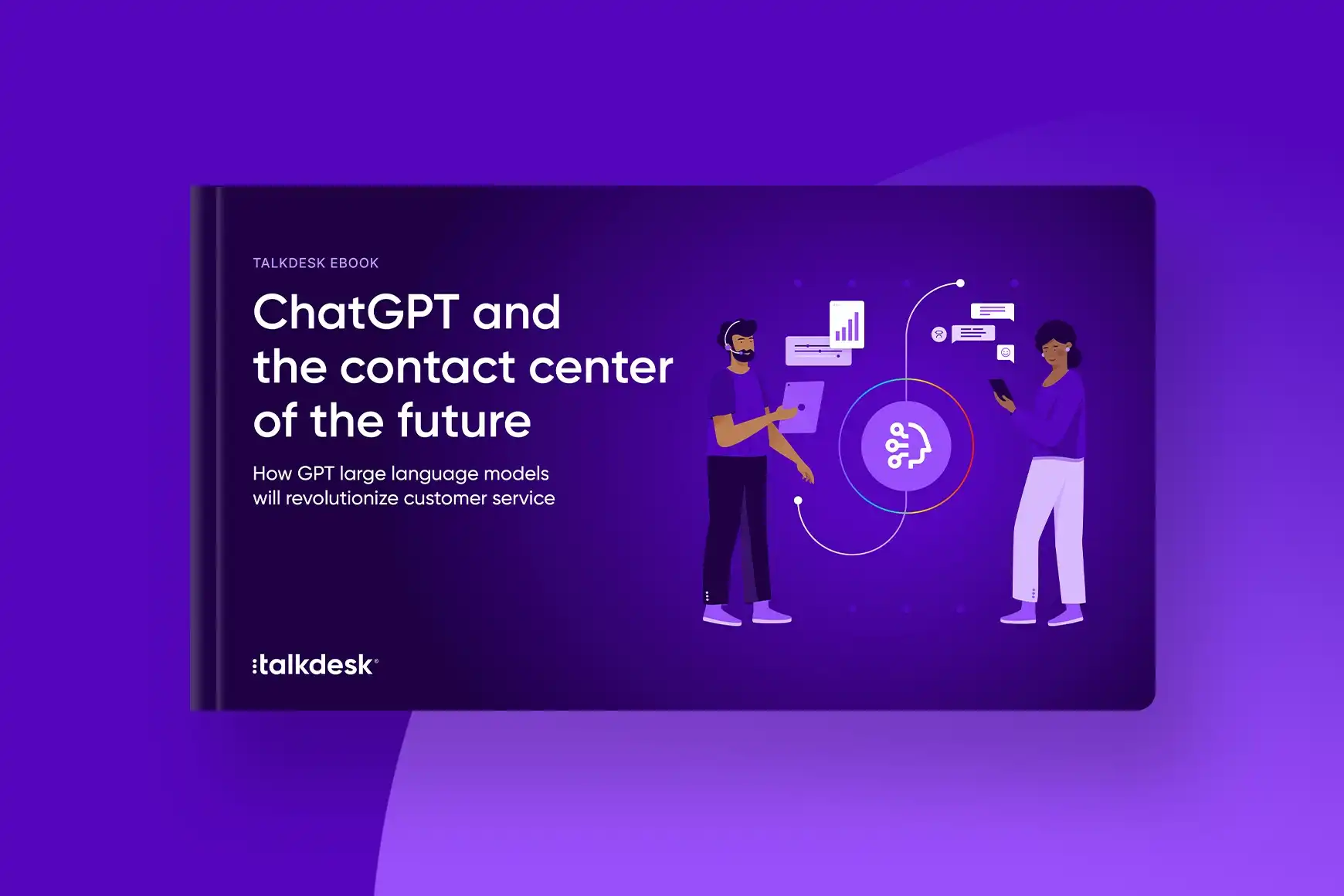8 types of customer service channels and how to optimize them

By Celia Cerdeira
0 min read

Customer service is no longer about merely answering phone calls. Today, customers expect to interact with businesses across multiple channels and receive immediate, consistent support regardless of the channel. As a customer service manager, understanding different types of customer service channels and how to optimize them can significantly enhance performance and customer satisfaction.
In this article, we’ll explore:
Eight popular types of customer service channels.
Understanding the different types of customer service channels is essential to meeting customer expectations and delivering superior service.
1. AI-powered chatbots.
AI-powered chatbots can handle simple queries around the clock, providing instant responses and improving customer satisfaction. Chatbots can seamlessly escalate the conversation to live agents for more complex inquiries, ensuring that customers always get the support they need.
Offer a faster and frictionless customer experience at a lower cost with a generative AI enabled chatbot that balances human touch for a smoother self-service.

EBOOK
ChatGPT and the contact center of the future
Find out how this exciting new technology will change everything from conversational AI to the role of the contact center agent.
2. Live chat with a real person.
Live chat is a customer service channel that offers real-time support. Customers can quickly resolve their issues through direct interaction with an agent without needing a phone call. This immediacy and convenience make live chat a popular choice among customers.
Live chat enables agents to handle multiple chats simultaneously, increasing agent productivity, reducing call volume, and cutting costs.
3. Phone.
Despite the rise of digital channels, phone support remains a preferred customer service type for many. Speaking directly to an agent adds a personal touch and helps build customer trust. It’s particularly useful for resolving complex issues where verbal communication is more effective than typed text.
Phone conversations also allow agents to detect vocal cues and emotions, empathize with customers, and offer personalized solutions.
4. Email.
Email support allows customers to express their concerns in detail and get a response at their convenience. While it might not offer instant resolution, it’s suitable for non-urgent issues.
Also, email support allows agents to spend more time crafting detailed and thoughtful responses, ensuring that all aspects of the customer’s issue are addressed. It creates an opportunity to attach relevant documents or links to assist the customer further.
5. Social media.
Social media is a powerful customer service channel because it is a platform where customers spend a significant amount of their time. Businesses can engage with customers in a casual and friendly manner, respond to queries publicly, and showcase their commitment to customer service.
It provides businesses a platform to proactively address common customer issues and share updates, enhancing transparency and trust.
6. Communities and forums.
Communities and forums are platforms where customers can share experiences, ask questions, and find solutions from other users. This peer-to-peer support fosters a sense of community and reduces the load on your customer service team.
These virtual gathering places serve as a valuable source of user-generated content, offering real-world insights into customer experiences with your products or services. They also provide a platform for your superusers to shine, fostering brand advocacy.
7. Self-service portals.
Self-service portals provide customers instant access to information and tools to solve their issues independently. These portals, housing FAQs and knowledge bases help reduce interaction volumes and free up agents to handle more complex issues.
Self-service portals provide 24/7 support to customers, allowing them to resolve their issues when it’s most convenient to them, greatly enhancing customer satisfaction.
8. Mobile messaging.
With the ubiquity of smartphones, offering customer support via mobile messaging platforms, like SMS or WhatsApp, is essential. It’s convenient for customers and allows businesses to provide timely and personalized support.
It allows for quick back-and-forth conversations, making it ideal for resolving issues swiftly. It also offers the benefit of being less intrusive than phone calls, as customers can respond at their own pace.
Ways to optimize your customer service channels.
Strategies to optimize your customer service channels for maximum efficiency and customer satisfaction include:
Provide AI tools to help agents.
AI tools like Talkdesk Agent Assist™ can automate administrative tasks, allowing agents to focus on resolving complex customer queries. They can also provide real-time suggestions during interactions, enhancing agent performance. An integrated agent workspace can streamline workflows, providing a unified view of all customer interactions.
Adopt AI interaction analytics.
Talkdesk Interaction Analytics uses AI to analyze customer sentiment and identify common issues, allowing businesses to improve their responses and overall customer experience.
Improve chatbot conversations.
Optimizing chatbot conversations is crucial for delivering effective self-service. With Talkdesk AI Trainer, you can enhance the accuracy of chatbot-customer interactions, resulting in faster resolution times and reduced need for agent intervention.

ON-DEMAND WEBINAR
5 ways to design virtual agents and chatbots to delight your customers
Learn the specific pitfalls and design flaws in AI chatbots that can lead to frustrating experiences for your customers, and how to resolve these issues.
Optimize your phone support experience with voice engagement tools.
Implementing call routing and IVR systems can streamline phone support by directing calls to the appropriate agent or department. Integrating AI with these tools can analyze call patterns and help predict customer needs, enhancing the phone support experience.
Train agents.
Training agents in active listening, issue resolution, multitasking, and real-time assistance can significantly improve customer service. Tools like Quality Management enable supervisors to use AI to train agents on best practices.
Enhance your email support.
Setting clear response time expectations and prioritizing urgent emails can make your email support more effective. Also, implementing automated responses for common queries can speed up the process, ensuring customers receive timely assistance.
Improve your social media support.
Monitoring social media platforms for customer inquiries and responding promptly to public and private messages can enhance your social media customer service. Regularly updating your social media platforms with relevant content can also keep your customers informed and engaged.
Establish self-service portals.
Establishing a self-service portal on your website with helpful information, such as FAQs can empower customers to resolve their issues independently. Updates based on customer feedback and usage trends can ensure they remain useful and effective.
Measuring and analyzing channel performance for maximum results.
To ensure your optimization efforts are paying off, tracking key metrics like first contact Resolution (FCR), average handle time (AHT), Net Promoter Score (NPS), and customer satisfaction (CSAT) for each service channel is crucial.
These tools can provide insights into how different channels contribute to the KPIs. Understanding this can help you identify which channels are performing well and where improvements are needed.
Also, remember to analyze KPI trends over time, tracking the progress made in each customer service channel. This will help you understand which channels are contributing most to overall performance and allow you to allocate resources effectively.
Enhance your customer service experience with Talkdesk.
With Talkdesk Omnichannel Engagement solutions, you can leverage generative AI tools and analytics to deliver exceptional customer experiences across all channels.
Talkdesk advanced customer experience analytics enable you to go beyond surface-level metrics to uncover deep insights. This includes understanding customer sentiment, identifying common issues, and predicting future behavior. These insights can help you proactively address customer needs, reducing the likelihood of issues arising in the first place.
Take your customer service to the next level with our Omnichannel Engagement solutions.







